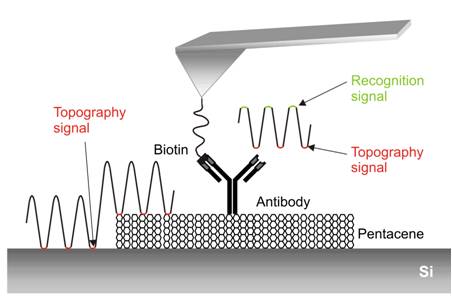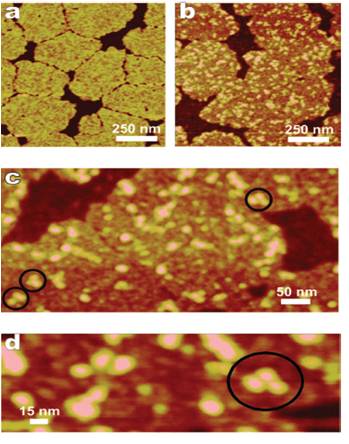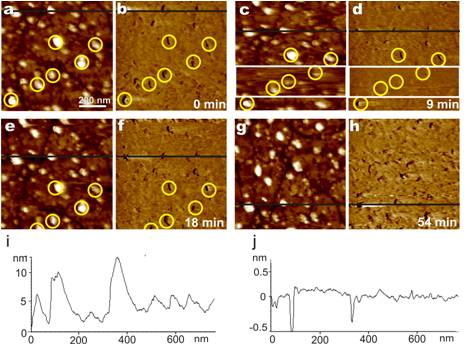We aim to develop methods and instruments for the simultaneous mapping of topography and chemical recognition processes. This will be accomplished by a combination of the instruments developed above together with the use of tips with appropriately functionalized to form specific bonds with a region of the surface. This instrument could be applied to image organic-inorganic hybrid surfaces and devices.

Figure 1. Scheme of the simultaneous topography and recognition AFM imaging of antibiotin antibodies adsorbed on pentacene islands. A magnetically driven cantilever oscillates across the surface. The oscillation signal is split into two parts of which the lower part is used to generate the topography (topography signal, red) and the upper part is used for the recognition image (recognition signal, green).

Figure 2. Amplitude modulation AFM images of pentacene islands before and after antibody deposition. (a) The pentacene islands (∼1.5 nm in height) show a relatively rounded shape. The silicon appears dark in background between islands. (b) After antibody deposition, the pentacene surface is covered by many small particles. Many of them show the characteristic Y-shape of IgG antibodies. (c) High-magnification image of a pentacene layer containing physisorbed antibodies. The antibodies showing a Y-shape morphology are marked. (d) Zoom of a region of panel c showing an antibody molecule on pentacene with its expected size and shape

Figure 3. Time series of topography (a,c,e,g) and recognition image (b,d,f,h) of antibiotin antibodies adsorbed on pentacene islands obtained using a biotin-functionalized tip. Within the framed area in c and d, the setpoint-amplitude was increased to a value bigger than the PEGlinker length, which resulted in a disappearance of the recognition spots (black circles between the white lines; compare to panels b and f). Note that the antibodies before and after the setpoint-amplitude increase are recognized by the biotin-functionalized tip (white circles). (i,j) Cross-section indicated by the lines in panels a and b.












